I am slightly anxious to post this interview on my blog. My questions could have been sharper, I wonder if Lindsay will be okay with the interview, and hope that it gets more than 7 likes on Facebook. Is anyone going to read it anyway? At the same time, I am very happy that I did get the chance to talk to her in New York, which made me feel encouraged that my research is on the right track. Anxieties do not exist on social media. They exist, but we cover them up with images of the happy, bright, colorful moments of our lives. I open Facebook and see that my latest post only got 13 likes. I open twitter and notice a tweet of @sosadtoday – the tweet got 2K favs and 1.1K retweets. I scroll down on her feed and see a fan posting a photo of a paragraph from her book that says ‘I try to set rules around my Internet usage. The act of rule-setting means that I am probably an Internet addict. Like, people who aren’t addicts don’t need to set rules about things. They just do them.’ I wish I had written that sentence in a collection of personal essays. I open the Dutch web shop bol.com and order Melisa Broders personal essays, So Sad Today.
Lindsay Howard is an independent curator that explores how the internet is shaping art and culture. She has curated digital art auctions, and has been a curatorial director at 319 Scholes and NewHive. Her latest project, Temporary Highs is on show from 2 June until 31 July 2016 at bitforms gallery in New York.
Temporary Highs is about our addictive relations with social media and immediate gratification. The show presents works that examine the pleasures and anxieties around experiences of reward-seeking behavior, (over-)sharing and consumption, multitasking and the search for validation, understanding and connection. The opening on 2 June 2016 was very busy, the gallery hot and sticky. Too busy to take nice photos, and since I also didn’t have internet access I was forced to look at the works and talk to people IRL without any online distractions. After the rush at the show I took some photos, and later that night in my apartment I posted some photos to my social media. Back in the Netherlands I am editing the interview. While writing this introduction I check my Instagram, one of the posts got only 7 favs… I should have posted it a bit later due to time difference, to increase the like potential.
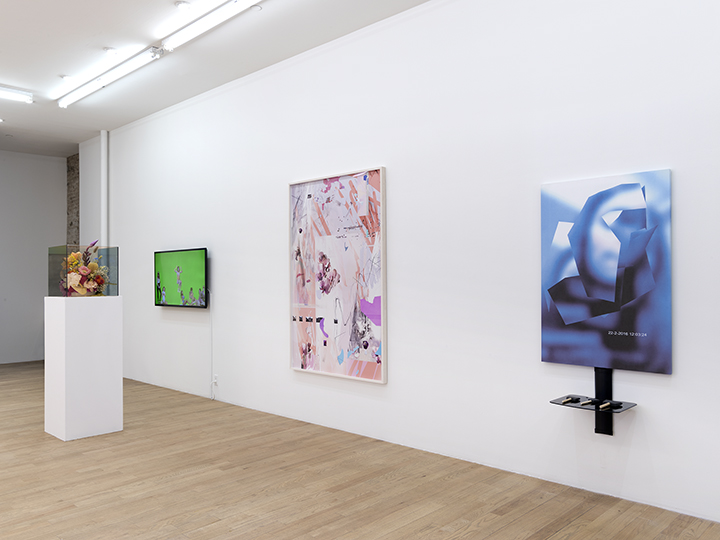
Temporary Highs, bitforms gallery (2016) installation view
The timing of the show feels right. As a reaction to the all-pervading intrusion of the digital and its networks in our lives, we are exploring ways to deal with being online. Digital detoxing, withdrawing from social media, and going offline are just a few extreme examples that points towards the need for a healthy relationship between the online and offline. While writing this, I delete the Facebook app on my iPhone. From the press release to the exhibitions’ website, everything fits into this complete picture of our collective obsession with instant gratification, and the highs and lows that come with it. It’s a smart show with an all-embracing way of curating that follows the idea of ‘the medium is the message’. The concept of the show is implemented in all its aspects: from the works to the press release, and from the website to this interview.
On 7 June 2016 Lindsay Howard and I found some time to visit the gallery together and talk about the works in more depth. I recorded our conversation and put it into a podcast episode, which you can listen to here:
Images of the works discussed in this episode can be found at the bottom of this blogpost.
After visiting the gallery we settled down at a cafe with a very sweet and sour, bright pink strawberry lemonade and talked about her personal online highs and lows, her curatorial practice and about Temporary Highs.
NR: Do you remember your first experience with the internet?
LH: I remember my first traumatic experience with the internet. I was probably twelve years old and spending a lot of time in chat rooms. I don’t think my parents even understood what internet was yet. In the chat room there was this child actor named Jonathan Taylor Thomas, a dream boy, and it seemed like it was him. We took the conversation outside the chat room, we were emailing each other, he started sending me pictures of himself, and we were going to meet in person. I was so excited that I had actually met him.
As it started to escalate further, I got an email from someone saying ‘I am a police officer, you need to be more careful. This is a way to protect our youth from the internet’. I remember sitting behind my computer feeling like a complete idiot. I just cried, tears were coming down that I fell for this trick and that I was caught. I felt embarrassed.
This experience was a reality check. As a curator I experienced that trolling is part of the experience of the internet. In one of my first projects, with DUMP.FM the artists in the community took the emails that I had sent them and dumped them publicly. That was probably one of the biggest trolls that have ever happened to me as a curator. It was very exposing, but it is part of the landscape I am working in. I understand that the boundaries of privacy and non-privacy and all the tension around it are part of the space that I am trying to explore.
NR: Do you remember your first encounter with net art?
LH: I saw John Michael Boling’s http://www.gooooooooooooooooooooooooooooooooooooooooooooooooooooogle.com/. I never taught of the internet as a place for these kinds of interventions. It broke my idea of what the internet could be and made me more interested in it.
NR: What made you start curating?
LH: In 2009 I started a blog to post a lot of images of IRL gallery shows. Over time I realized that a photograph of a painting on the internet is much less interesting than a digital painting on the internet. To improve the look and feel of my blog I stumbled in this community of artists – a very young Artie Vierkant, John Rafman, Petra Cortright, and Parker Ito – and started posting their work as well as that of poets, writers, and musicians. I was piecing together the large tapestries of what was happening on the internet. The owner of 319 Scholes Gallery saw my blog; he liked the aesthetics and asked if I would like to do an exhibition. Basically, that is when I learned the word curator and did my first show.
NR: What did you do before 2009?
LH: I went to art school and thought that I was going to be an artist. I have always approached curating in an artistic way. I am not an academic curator, it is much more like an artistic process; being in conversation with culture.
NR: Your personal website states that you are a curator exploring how the internet is shaping art and culture. What are your findings up to now? What are the biggest shifts?
LH: Right now, on this exact moment, I would say that the Temporary Highs show was important because it captures the need for likes and favs and retweets in a moment where it is about to dissipate. There is a growing desire to withdraw from social media, there is less interest in how many favs something gets, and more interest to have direct, or authentic communication.
NR: Have we moved beyond the generation of likes?
LH: I think that is the next stage. We are swinging in the opposite direction. In terms of art specifically, I think there is less interest in objective, authoritative voices, and much interest in authentic voices. That was one thing I brought into the exhibition. I made the press release more about my experience trying to write a press release in this space where there are so many analogous distractions. People are repelled by authoritative voices, they don’t respond to them anymore. They respond to things that are relatable. Twitter accounts like @sosadtoday are so important because they are expressing things in a clever way that anyone can relate to.
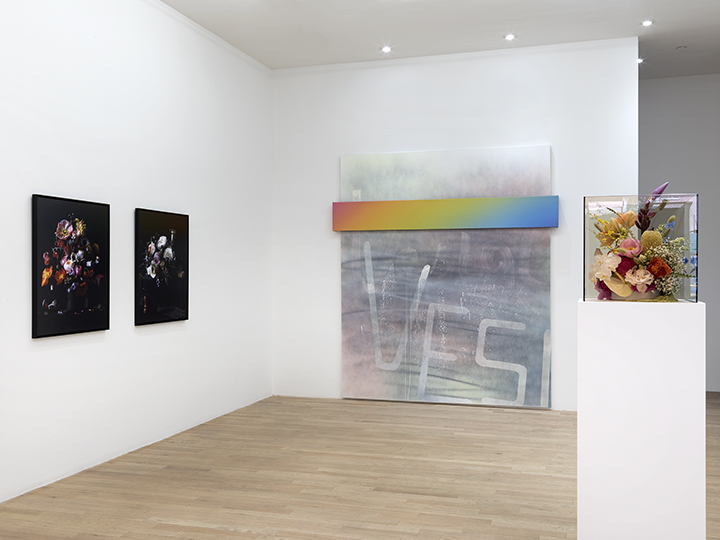
Temporary Highs, bitforms gallery (2016) installation view
NR: Your website also states that you use experimental curatorial models, can you explain what kind of models you use?
I wrote that when I was curating the F.A.T. Lab shows. I was doing a five-year retrospective of their work and did not just want to take the projects from the internet and slap them into the gallery. I started to come up with an authentic way of translating it into a physical space, not only the projects but also the spirit of the group. I selected twenty works from their history as well as some new works and invited all of them to come to Eyebeam for a weeklong residency to collaborate on new projects. The exhibition became an iterative show that changed over the course of the week; people who came there for the opening saw a complete different show by the time the came there for the closing.
NR: How would you describe your role as a curator in a realm where all information is easily accessible for almost everyone and people can connect directly, without the social hierarchies of the traditional art world?
LH: There is still a need for pulling people together and taking time to think about a concept or a work. I like to call it the contemplated distance of the gallery space. You can see all the artists on Artsy or Instagram, but taking off your pajamas, putting on clothes, and coming to a gallery space is a different experience and deepens your experience of the work. That is the value that a physical gallery space has.
For the past 1,5 years I worked with NewHive, an online platform for commissioning digital works that presented its own host of challenges. I was trying to drive conversation around online exhibitions, where you do not have that contemplated distance and you are straight up competing with Facebook and Gmail. In that case net art is just a tab among all tabs and that was a challenge that I wanted to take on. My number one goal at the time as a curator was to have a legit art publication review an online exhibition in the same way as they review physical exhibitions. About a year ago I was talking to Zachary Kaplan and Michael Connor at Rhizome. Now Rhizome will only review online exhibitions, they are not doing any gallery shows. That is a big step forward for work in the field and will hopefully encourage a lot more artists and institutions and collectors to take that work more seriously.
NR: The website of the show doesn’t look like a standard website, is more like an extension of the concept. Can you talk a bit more about that?
LH: I always knew that there was going to be an online component to this show to carry out the concept. I talked to some designer friends, called HAWRAF INTL., laid out the concept and told them go all the way. The artists were very open for taking risks and have been very vulnerable in sharing their personal experiences, really putting their heart, soul and guts into their projects. I want the website to do the same. They came back with the idea of doing a pseudo social media network that is kind of gamifying the show. When you log in, the works that have the most likes rise to the top. It is about whom people are responding to. In addition to that, when you log in to the website you can like a like, you can like a comment of a like, you can comment on a like of a comment of a like. The website takes all existing tropes of any social media platform and heightens them to an extreme degree for more hits, more highs, more likes, more favs. It amplifies the thesis of the show to a million degrees.
NR: In a lot of your projects you approach the balance between online and offline: in general, how do you feel that the traditional role of the artist has changed in the context of digital networks an reward-seeking behavior in a compulsive cycle of (over-)sharing and consumption?
LH: For this show I was interested in artists who seem particularly effected by social media; positively, negatively, or in dialogue with it. The director of the gallery said she does not feel any highs from social media. She is having a completely different perspective and is interested in artists who have long-term careers, long-term practices. She was questioning whether a temporary high approach undermines a long-term practice. I would say that it does not. I think that artists who are operating and competing in this space are responding to the culture that they are in and that is what artists are supposed to do.
NR: How do you yourself relate to social media highs and lows in your own practice as a curator?
LH: Social media has always been an important part of my practice, through the highs and the lows. I participate regularly in all the social media platforms regardless of whether I have something to say about a show or something else. You have to keep your networks alive for the moment that you have something important to say. I asked the artists if the number of likes or retweets affects the way they make a piece. Many of them said that they felt guilty about it, but it did. Posting something is a way of getting instant feedback. If it gets no likes, you probably would scrap that piece. One of the artists said that she put two pieces up on Instagram, one got way less likes, but she put it in a show anyway. It was the one that did not sell. She thought that maybe there is some inherent intelligence in social media and the feedback that we get there. It’s important to have conversations about how it is affecting the artists creating and displaying their work, because it’s going to have a big impact on the way that art looks in fifty years.
NR: Can you describe how the interest from institutions and the market in internet related art has changed over the last few years?
LH: The goal of the digital art auctions that I did at Phillips was to stoke the fire for collector interest. Success in the market often translates to institutional success for artists because the collectors who are buying the works are on the boards of the museums. Everyone is embedded and connected. There are excellent curators in powerful positions like Paola Antonelli at MoMa who are very interested in digital art. And Chrissie Iles at Whitney Museum of American Art has a major exhibition of cinematic works coming up this fall, which is going to be an amazing show. But it is still a work in progress. People still love fucking paintings, they can’t get over that. Even digital artists like painting sometimes, they like subverting painting.
NR: In 2010 you did your first show in a physical gallery, where you wanted to leverage the credibility of the white cube. How do you look back on that experiment? What is the quality of the physical space in curating the digital?
LH: There was no quality in the physical space; it was a piece of shit gallery, a dirty warehouse. But we made it look beautiful on pictures with Photoshop, the right lighting and staging. What I learned is that if you are a young artist or curator and you want to get started you can do it anywhere. You do not need a gallery space; it can be in your own apartment. One of my favorite galleries in the world is Preteen Gallery in Mexico City. Gerardo Contreras did the first solo show of Petra Cortright there in 2011. I was talking with Artie Vierkant who also did a solo show there and he said: you see all these pristine images of Preteen Gallery on the internet, this beautiful sterile white space. But if you just turned the camera 30 degrees it would be his kitchen. The gallery space is his living room. We were doing something similar with 319 Scholes. It was an enormous raw warehouse, beautiful in its ugly way; we leveraged the whiteness of the walls and the cement floors. Bringing a lot of young artists into the NY art scene, so they could have a show in NY on their resume, is kind of the brand of 319 Scholes. It is a way of backdooring a lot of talented curators and artists into New York.
NR: How would you describe the influence of the digital revolution on the art world?
LH: O fuck. It is really tacky. To be honest, seeing the traditional art world approach the internet makes me mad sometimes. They really miss the point of what it is supposed to be about. I am much more interested in digital natives approaching the art world than in the art world approaching digital natives.
Recently I saw a mayor art PR company coming out with a big press about .art. They call it the new real estate for the art world online. You submit an application and if you are highbrow enough you can be part of the network of blablagallery.art. These systems and hierarchies are exactly what we are trying to get away from on the internet. I mean, they exist but net art was supposed to fuck with all of that. The internet has to be a space were anyone can connect. And now you see people with the most money trying to buy up the space as if it is actual real estate. That is depressing. Fortunately, most of these art world attempts at the internet fail because they are trying too hard to translate the bullshit of the physical art world to the internet. The internet just does’nt absorb it. Artsy managed to weather the storm in a pretty elegant way. It reached out to a lot of galleries, not only the highest brow galleries, and has been a good resource because of their editorial content. But most of the time when the art world applies for the internet it does not work.
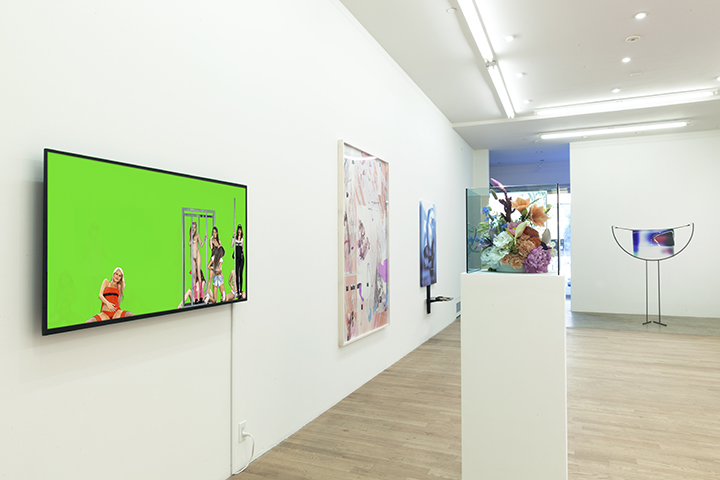
Temporary Highs, bitforms gallery (2016) installation view
NR: Do you believe in the term post-internet?
LH: I think that labels are helpful for non-artists to locate a particular genre or movement and I appreciate that post-internet is so hyped the last few years because it makes my job a little bit easier in terms of art advisory. It is a term that people can connect to, even if they do not completely understand what it means. They understand that it is something. It gets more people in the door and open to think about the work. And it is advantageous in terms of marketing and selling.
NR: Do you think the term has expired?
LH: I think it inspired as soon as it was created. People located it since it came out of Marisa Olson’s mouth. Gene McHugh’s blog about post-internet was probably one of the best things that ever happened on the internet. That was when the term was niche; he was an insider in the community writing about other insiders in the community. Now it has become much more broad. I am not offended by the term and find it useful in certain circles; it gives more visibility to artists. Maybe the contention about it creates even more desire for the works.
NR: Can you tell me about your future plans, what are you hoping to achieve in the future?
LH: In my role as a curator I have really been pipetting to advocate for artists in whatever way I feel is necessary at the time. Six years ago that meant putting net art in gallery space, three years ago that meant pushing a market for digital art with the auctions. The last 1,5 years were focused on trying to bring more criticality to net art exhibitions and works.
I am still working as art advisor, thinking about works going into collections and trying to make sales because I realized that if we do not urge a market for digital art it’s going to be much less viable for artists to continue their work. The market should be an option, and there should be other options as well. Where else can we help bring funding to artists so that they can continue to make work? A lot of these artists are usually talented as programmers and developers. The going rate for that in an ad agency is enormous. Encouraging the market where artists make sales is important for the longevity of the field. People underestimated that, there is a lot of resistance to the markets and experimental financial models but I think now is the time when we have to be thinking about that.
NR: Do you have anything to add to this interview?
LH: This show has been very therapeutic for me and the artists.
NR: What have you learned?
LH: I’m not alone. That seems not like a very professional, curator’s reflection, but it is a human one. The internet can be a very isolating place, the majority of the time you are viewing a lot of other people’s lives, you have these windows into their lives, but you can’t really connect to them or engage with them. What I learned is that this is happening to everyone, we are all in it. Some of the artists were talking about stalking former lovers or collectors stalking them, it’s happening to everybody. And I think that decreasing the shame around it, being open about it has been probably the productive thing that has come out of it so far.
Selection of works discussed in this episode
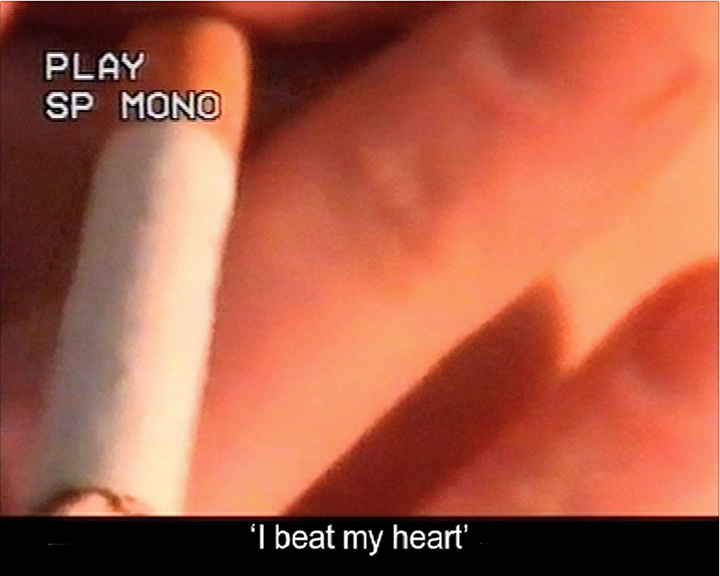
Hannah Perry – Channel 4 (2016)
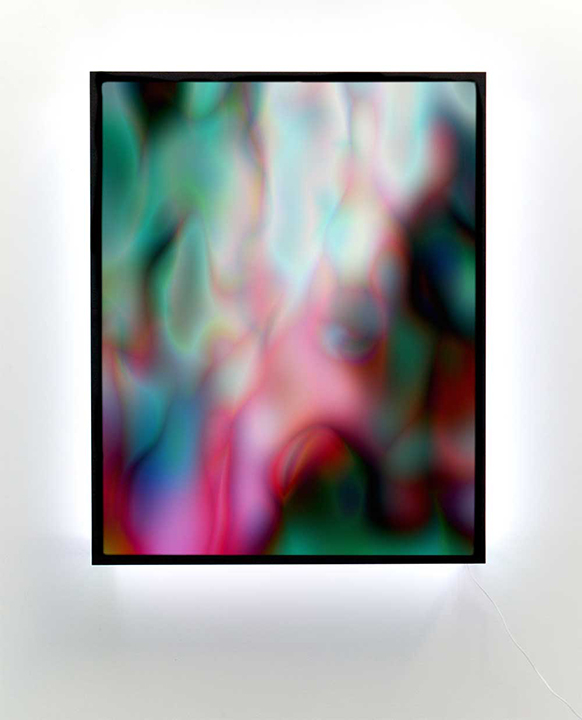
Jonas Lund – New Now 4 (2016)
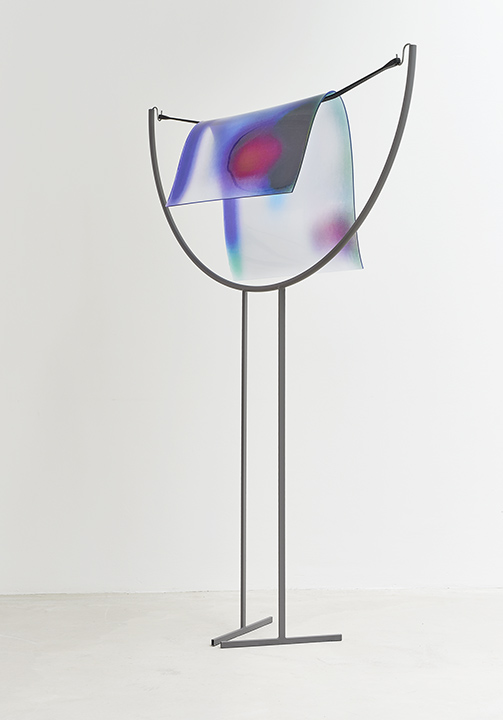
Anouk Kruithof – Neutral (openhearted) (2015)
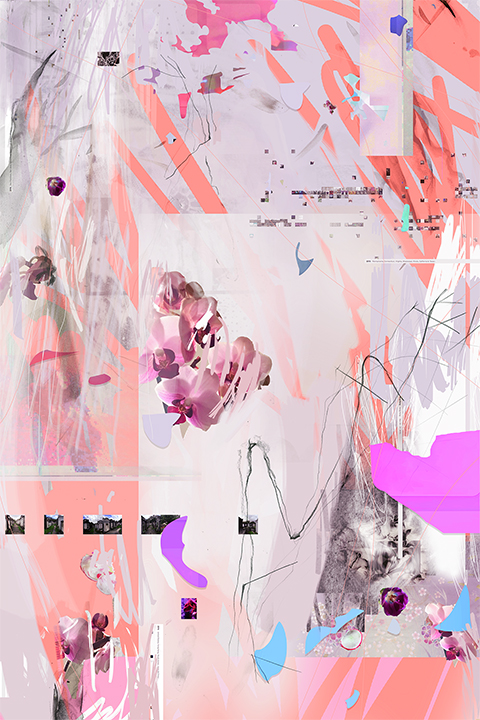
Katherine Frazer – RAM pilgrim (2016)
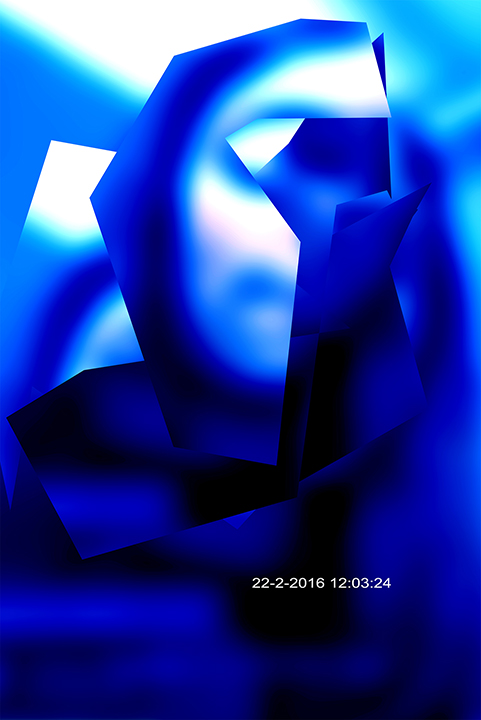
Ry David Bradley – Watch Me (22-2-2016 12:03:24) (2016)


